- Want to know the difference between gagging vs choking?
- Are you prepared what to do in the unlikely situation where your baby or toddler may choke?
- Are you about to begin BLW & are nervous?
- Have already started and are still nervous about offering solids?
Let me just say… we started baby led weaning (real solid foods…no puree or mush) at 6 months old when Ava was showing all readiness signs, and we have NOT HAD ANY choking incidents (touchwood) till this day. She is now 4 years old. Choking can happen to anyone at anytime, young or old… all we can do is be prepared. Know the difference between ‘gagging vs chocking’ (read red & blue chart below), avoid choking hazards (see below), trust your baby *if coughing/spluttering (*gagging) leave her to it – she will manage it.
- Baby-led weaning (BLW) is when you let your baby feed themselves tasty finger foods right from the beginning.
- Spoon-led weaning is when babies learn to swallow first (purées) and chew later.
‘Besides all the skill development, self taught self-control, the beauty about baby led weaning is that the baby learns how to control, chew and handle different textures and foods right from DAY 1! Rather than suck, swallow motion which a puree/spoon-fed baby learns first… I get soooo many messages from puree/spoon-fed parents saying that their baby is so fussy and gagging a lot with new textures and finger foods and they find it so hard to switch their baby from purees too finger foods and are worried about choking! In this instance, stick with traditional gradual weaning… puree, then mashed/lumpy then finger foods… as baby now has to learn new textures and foods’
THE DIFFERENCE BETWEEN GAGGING AND CHOKING?
Gagging is NORMAL: gagging (face may appear red, splutter, cough, may vomit) as opposed to choking (silent and unable to make noise, blue) is a safety response to food travelling too far back into the mouth so when baby is gagging (coughing and splattering) they are actually handling the problem and it’s best just to stay calm and wait until baby coughs it up or carries on. Babies have a very sensitive gag reflex, designed to keep them safe from choking. If it is a big gag always offer some water afterwards.
It is always suggested to do a baby first aid course before or when your baby start solids, so you know what to do in the unlikely event of a choking incident. Please see FAQS on choking hazards.
HOW TO PREVENT CHOKING?
Here are few things you can do:
- Do a first aid course to learn to know what to do in an unlikely incident of choking. The benefit doing a first aid course will boost your confidence and relax you when your baby begins solids. (Downloaded a first aid app called “baby and child first aid by british red cross”it’s free and always accessible on your phone in cause u forget what to do in case of any baby or toddler incident. )
- A relaxed parent sets a calm environment for baby when learning to eat solids.
- Always sit with your baby or watch your child when they are eating. Discourage your child from crawling, walking, talking, watching television, lying down, or doing anything else while eating that might distract him/her from his meal.
- Ensure baby is sitting upright at mealtimes. A few ways here: in a supported upright highchair, or an inclined upright pram seat, or upright on a parents lap (supported with a parent holding babies hips)
- Never push food into babies mouth, offer food onto babies highchair tray by placing appropriate finger foods onto babies highchair tray. Enjoy baby is in full control at all times, from picking up the food to placing the food into her own mouth.
- NEVER feed baby laying down or in a car seat that reclines or a bouncer, this could lead to choking.
- Always watch baby when she eats.
Avoid choking hazard:
Firstly anyone at anytime can choke on anything, all we can do is reduce the potential hazards that may lead to a choking incident. Please use common sense and offer foods that you as a care-giver feel comfortable in offering. Please note: this short list of choking hazards may vary according to the country you live in. Please check with your doctor or country’s guidelines as to specific foods to avoid for your baby led weaner.
- Whole grapes: must be cut into quarters (from stem top to bottom, not around the equator), progress to halves (cutting from top to bottom only) as baby progresses (until approx 5 years old)
- Whole cherries, remove stone, and cut into quarters
- Whole big blueberries cut into quarters
- Cherry tomatoes must be cut long ways in quarters (until approx 5 years old)
- Whole nuts avoid (until 5 years old), try serving peanut butter or nut spreads and flours
- Popcorn (avoided until at 5 years old)
- Avoid hard candy or hard lollies (no nutritional value in these)
- If you give your baby a bottle, always hold the bottle and your baby while they’re feeding.
- Watch out for bony fish
- Cut off gristle on meats or anything that may contain hard pieces
- Round sausages and hot dogs: slice into rounds and quarter long ways
- Hard apple or raw carrot, can start offering once toddler is capable with more teeth/molars and parents are comfortable with their toddler’s capability in chewing foods, meanwhile raw apple and raw carrot should be cooked (steam, roast or bake) OR it can also be finely grated and mixed into moist foods ie yogurt or avocado.
- Any hard fruit or vegetables that can not be squished or mashed with ease using your thumb and index fingers. Tough skins can also make foods risky.
Many of these foods above, share the same high-risk physical characteristics that create effective plugs for the paediatric airway. (ref: AAP) This is why they should be avoided until older.
- Behavioral factors may also affect a child’s risk for choking. High activity levels while eating, such as walking or running, talking, laughing, and eating quickly, may increase a child’s risk of choking. Child games that involve throwing food in the air and catching it in the mouth or stuffing large numbers of marshmallows or other food in the mouth may increase the risk of choking. (ref: AAP)
A FEW TIPS TO TAKE AWAY:
Let us all help educate those around us, choking deaths can be preventable. Here is a chart on the difference between gagging vs choking (please feel free to share this post):
Disclaimer: I am not a Doctor, I am just simply sharing information and my experience. Please discuss with your doctor or pediatrician if you have any related questions or concerns about your baby or about gagging vs choking.
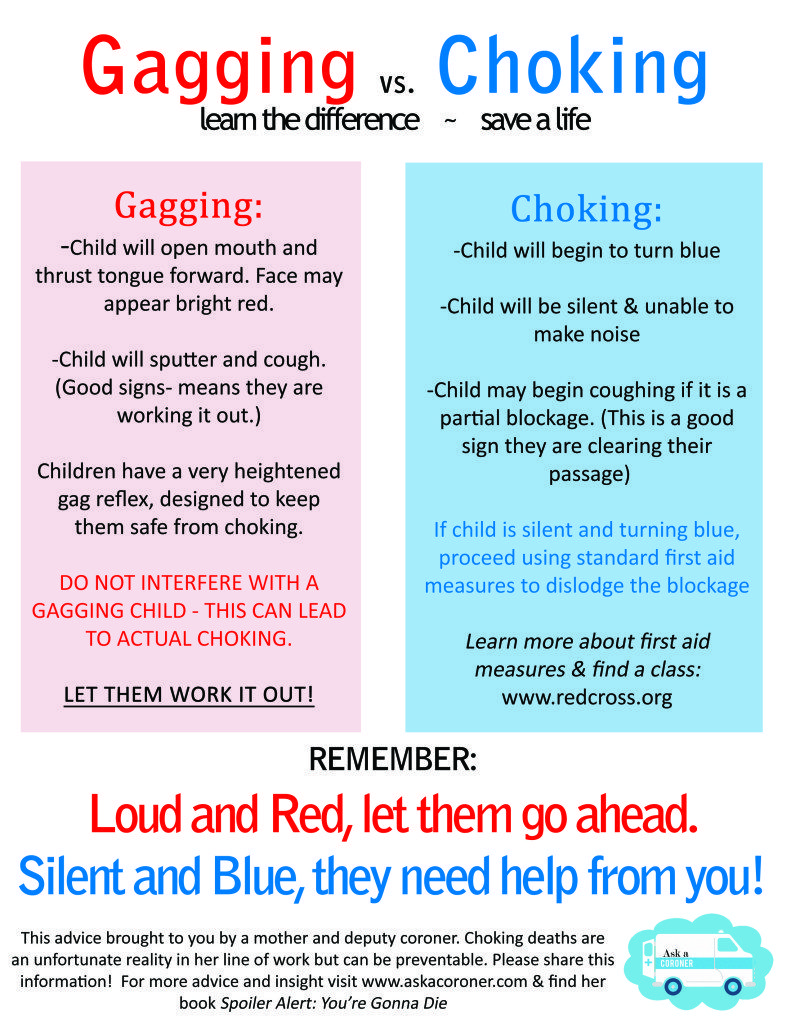
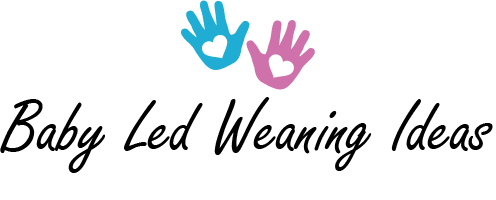
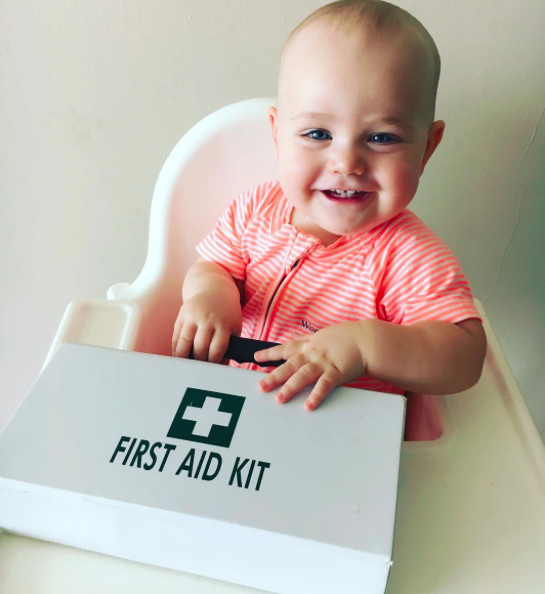
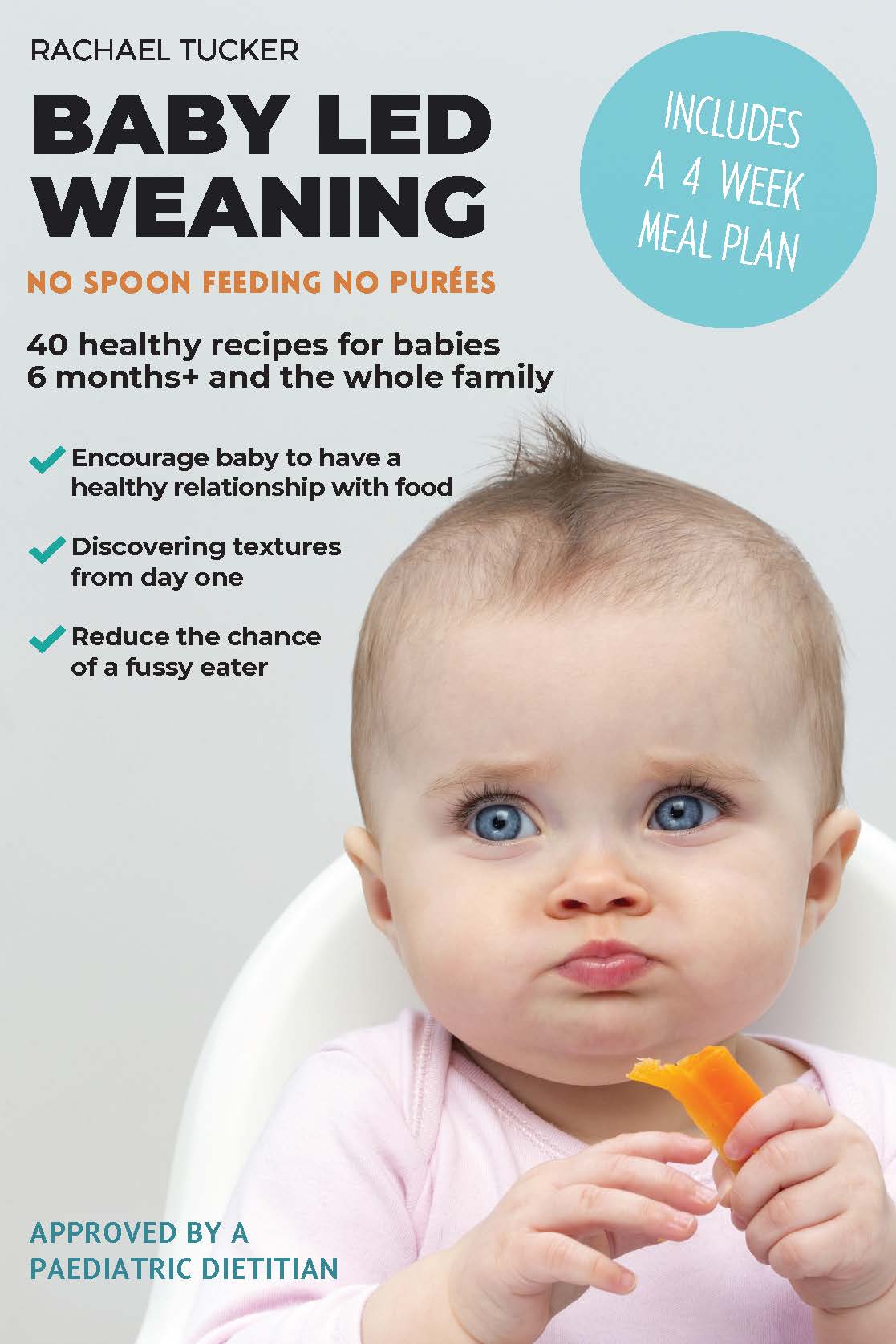
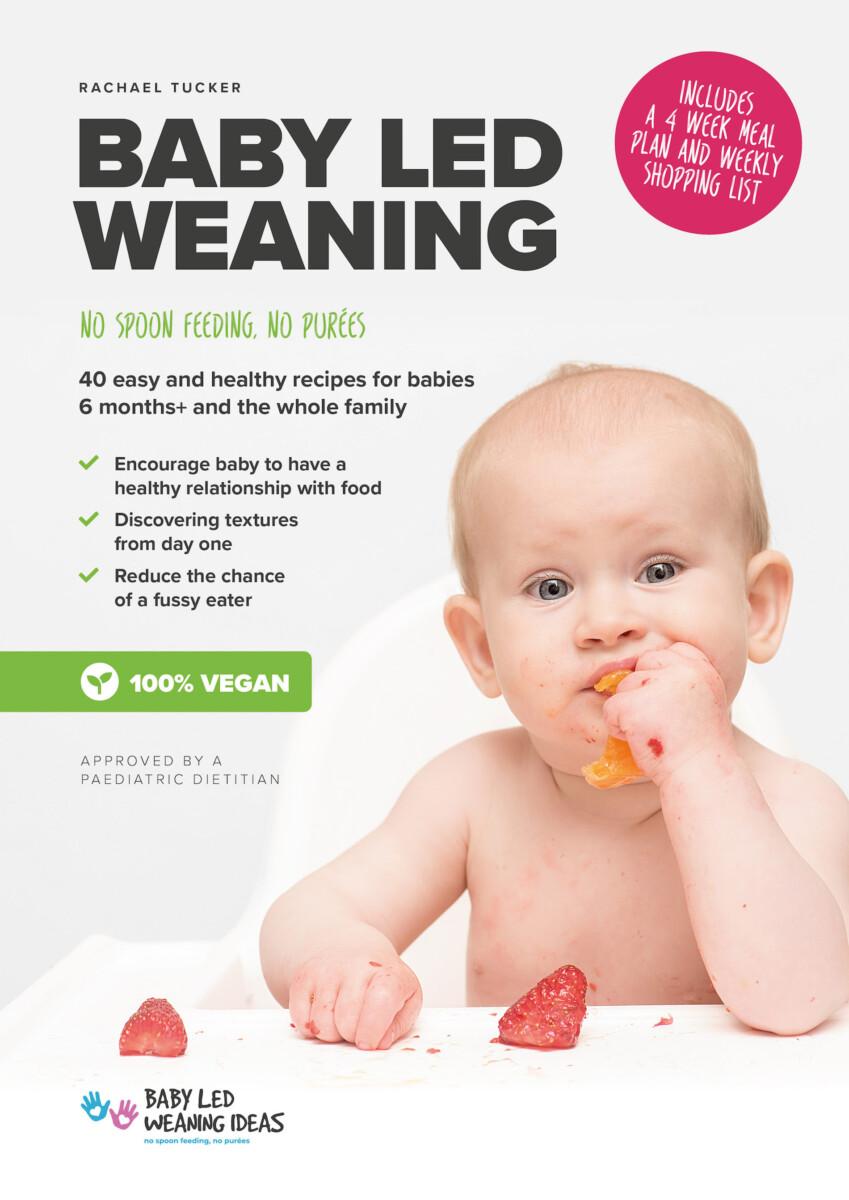



This is super useful! Thank you!